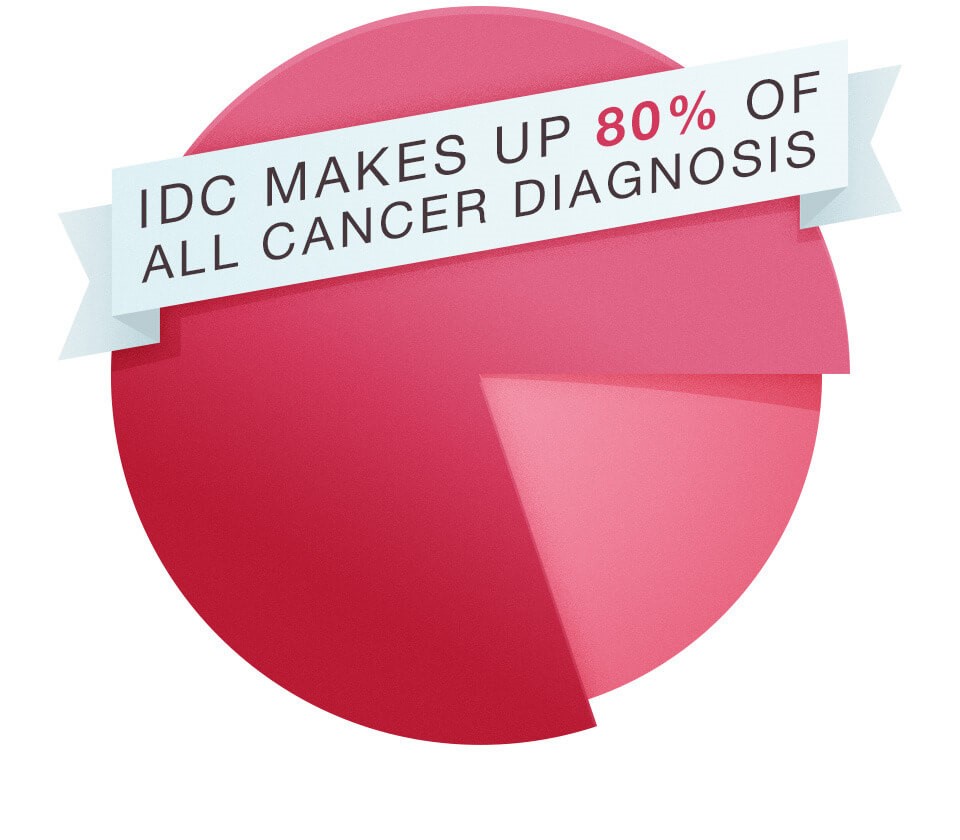BREAST CANCER AWARENESS:
Stages & Types of Breast Cancer
This is the third in a series of articles being published by CDI in observance of Breast Cancer Awareness Month (October 2020).
There have been tremendous advances in our understanding of breast cancer, detection and treatment options as well as the many variations and stages in which it may appear. The type of cancer and the specific stage at which a person is diagnosed has significant impact on the treatment protocols used, the speed at which the cancer might grow, and the overall survivability rate. The analysis of the disease falls into a maze of types, stages, grades, and conditions; the simple analysis here is taken from the National Breast Cancer Foundation: https://www.nationalbreastcancer.org/.
The four most common types of breast cancer are:
Ductal Carcinoma In Situ (DCIS). DCIS is a non-invasive cancer, which has not spread outside the breast. This is very early cancer and is  highly treatable – but left undetected and untreated it can spread into the surrounding breast tissue.
highly treatable – but left undetected and untreated it can spread into the surrounding breast tissue.
Invasive Ductal Carcinoma (IDC). By far the most common type of breast cancer, IDC is also the type that most commonly affects men. The cancer cells that began in the milk ducts have spread into other parts of the breast tissue. These invasive cells can also spread to other parts of the body.
Inflammatory Breast Cancer. IBC is a less common, but aggressive and fast-growing breast cancer in which the cancer cells infiltrate the skin and lymph vessels of the breast. Often it does not produce a tumor or lump. Instead, the symptoms of IBC are skin irritations such as a rash, redness, swelling, warmth, or dimpling/pitting of the skin on the breast. (Symptoms of mastitis, a breast infection, are very similar. If you are diagnosed with mastitis and the symptoms persist after a week’s treatment of antibiotics, it is important to see a breast specialist right away.)
Metastatic Breast Cancer (MBC). As the name implies, MBC is breast cancer which has spread (or metastasized) to other organs of the body, the most common which are the liver, lungs, bone, and brain.
The five stages of breast cancer are:
Stage 0 and Stage 1 cancer are both of the Ductal Carcinoma In Situ (DCIS) type. Stage 0 is a very early and highly treatable cancer, detected in the lining of the breast milk duct, having not spread outside the ducts into the surrounding breast tissue. Stage 1 is also a very early and highly treatable stage, in which the cancer cells have spread only immediately beyond the point of origin, with no spread outside the breast – or with only minimal, pinprick-size evidence found in lymph nodes.
Stage 2 breast cancer is still contained in the breast, or growth has only extended to lymph nodes nearby. It is divided into two stages:
- Stage 2A – tumor is 2-5CM in diameter and no lymph nodes have cancer cells present.
- Stage 2B – tumor is 2-5CM in diameter with cancer cells in less than 4 lymph nodes, OR the tumor is larger than 5CM.
Stage 3 means the breast cancer has extended beyond the immediate region of the tumor and may have invaded nearby lymph nodes and muscles, but has not spread to distant organs. Stage 3 is divided into three stages
- Stage III-A – tumor is larger than 5CM with no or less than 4 lymph nodes involved.
- Stage III-B – tumor of any size. Cancer has invaded the chest wall or breast skin (Inflammatory Breast Cancer). Invasion of up to 9 nearby lymph nodes is still considered Stage 3.
- Stage III-C – tumor of any size, or no tumor at all, but evidence of cancer is found in lymph nodes in the area of the collarbone or underarm.
Stage 4 Metastatic Breast Cancer has spread to other areas of the body. Although Stage 4 breast cancer is not curable, it is usually treatable. More and more women are living longer by managing the disease as a chronic illness with a focus on quality of life as a primary goal. With excellent care and support, as well as personal motivation, Stage 4 breast cancer may respond to a number of treatment options that can extend life for several years.
More information on the stages and types can be found at the American Cancer Society’s website: https://www.cancer.org/cancer/breast-cancer/understanding-a-breast-cancer-diagnosis.html.
